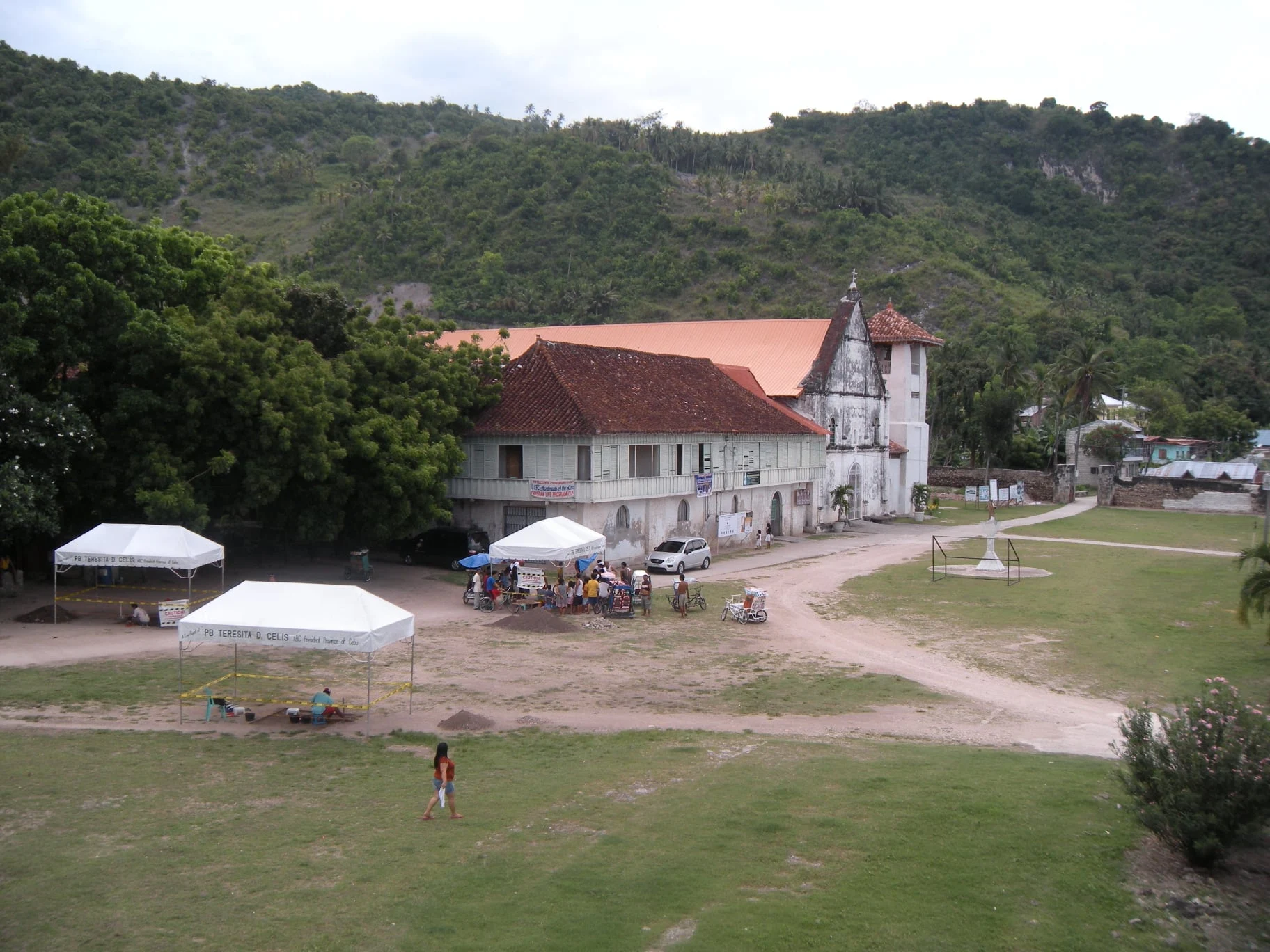Fascinating Early Historical Burials Excavated in Boljoon, Cebu - Philippine History [Archaeological Sites]
One of the most fascinating archaeological sites in the Philippines is a previously undocumented early Christian cemetery in the Municipality of Boljoon, Cebu that dates back to the 16th to 17th century AD. The site was discovered during archaeological investigations on the grounds of the Patrocinio de Santa Maria Parish Church led by Dr. Jose Eleazar Bersales of the University of San Carlos (USC). Six seasons of archaeological excavations by the National Museum of the Philippines and the USC from 2006 to 2011 have revealed 70 graves, of which 24 were relatively intact and undisturbed.
 |
| Boljoon church site in Southern Cebu |
The cemetery in Boljoon provides novel insights into the conversion of local populations into Catholicism during the late 16th to early 17th century. As observed in the cemetery, most graves in Boljoon are defined by two characteristics:
1) the bodies are placed in an extended position along an east-west orientation, where the head lies on the eastern end, and
2) the hand placement determines the sex of the dead, where males had their hands on their chest and the females over the pelvic area.
![funerary practices Boljoon excavated burial site Early Historical Burials Excavated in Boljoon, Cebu [Philippine History] funerary practices Boljoon excavated burial site Early Historical Burials Excavated in Boljoon, Cebu [Philippine History]](https://blogger.googleusercontent.com/img/b/R29vZ2xl/AVvXsEimNyeJpsQaBMIx3SaQ196xL7WQYbUtXXpAkXzce6_80RrSq4YStwe4RMGuSv_3zt1SpkNcXs88588M84F5YPt9Jb1TatKuKtctNOca1BiJSa6y4Ht1_TSg8ujCAzixRj-8RbX7/s16000-rw/Boljoon+Cebu+Archeology+Cemetery+Bones+Burials.jpg) |
| Boljoon excavated burial site |
The east to west grave orientation and hand placements of the dead were among the practices introduced by Spanish missionaries during the early period of Spanish colonization of the Philippines. These funerary practices are also recorded in early Spanish Christian sites in the Americas such as Florida, Mexico and Belize.
A significant portion of the burials in Boljoon, however, are found to substantially differ in terms of grave orientation and other attributes. For instance, a number of the burials were oriented in west to east, north to south, south to north and southeast to northeast directions; with a few lying on their side or in prone position.
![porcelain, stoneware and earthenware vessels Historical Burials Excavated in Boljoon, Cebu [Philippine History] porcelain, stoneware and earthenware vessels Historical Burials Excavated in Boljoon, Cebu [Philippine History]](https://blogger.googleusercontent.com/img/b/R29vZ2xl/AVvXsEinsoHIlWkEFpGQOKnr5NM-mwagAmmmxX2MBf0ySS1GItmanMoeJaNisOxGSzyik0oSrUFZsXfNDj_El3zjfbzqTCKslOFMM_G9GABUc7BYM4nGnvvuBKGer079A9nkhd252EbE/s16000-rw/boljoon%252Bceramics.jpg) |
| Boljoon ceramic finds |
Furthermore, the dead were interred with grave goods such as porcelain, stoneware and earthenware vessels, iron implements, and various ornaments such as necklaces, earrings and pendants made of gold, glass, carnelian and metal. These practices are held to represent non-Christian, indigenous pre-Spanish funerary norms and beliefs as recorded in Visayan ethnohistoric accounts and pre-Spanish period archaeological sites in the central Philippines.
![Boljoon pot, iron medallion and materials from the site Historical Burials Excavated in Boljoon, Cebu [Philippine History] Boljoon pot, iron medallion and materials from the site Historical Burials Excavated in Boljoon, Cebu [Philippine History]](https://blogger.googleusercontent.com/img/b/R29vZ2xl/AVvXsEgtZ78NWKsPfqk_5ksLiKUcGqM0FZYXfJx5m5lmwhXiSOAE8Gg8T1ik-emAeiqpZugImOMvk3VHBLN0itJqA7LASlo45qbfZAjZ74RzJ5WE5CA8G4CRLuZmzKaSVfqHDK3_K3BE/s16000-rw/Boljoon+Cebu+Archeology+finds.jpg) |
| Boljoon pot, iron medallion and materials from the site |
The fusion of indigenous mortuary practices with Catholic funerary norms within the cemetery at Boljoon are argued to represent the ways indigenous communities contested the new realities of Spanish rule in the late 16th and 17th century AD. At a time when Spanish administrators were colonizing local populations and imposing new religious ideas and Catholic practices, indigenous populations found ways to show their resistance against the Spanish and continue to practice local mortuary traditions.
The late 16th and 17th century cemetery at Boljoon localizes our understanding of previously undocumented stories in Cebuano and Philippine history.
We have just opened to the public but since tours are suspended, you can instead visit some of our ancestors’ material culture in reference to pre-colonial mortuary tradition.
________________
Credits:
Text and photos by Alexandra de Leon, and poster by Timothy James Vitales / NMP Archaeology Division
©️ National Museum of the Philippines (2021)

![Early Historical Burials Excavated in Boljoon, Cebu [Philippine History] Early Historical Burials Excavated in Boljoon, Cebu [Philippine History]](https://blogger.googleusercontent.com/img/b/R29vZ2xl/AVvXsEjQcy0oM8-xKZqppMC8P8INKoNdYIQ2aKt-T4kJjNjuiVIoQ3B95RKyBoxf3oReWJnHwaJbXOHKsm9bZ5bbMLMfoYafKSCG2pD33wiLdPhGTURJTIuhop9CvUgMXe95whQlyk-v/s16000-rw/155335943_4071673729523581_889895461707116264_o.jpg)

No comments:
Got Something to Say? Thoughts? Additional Information?